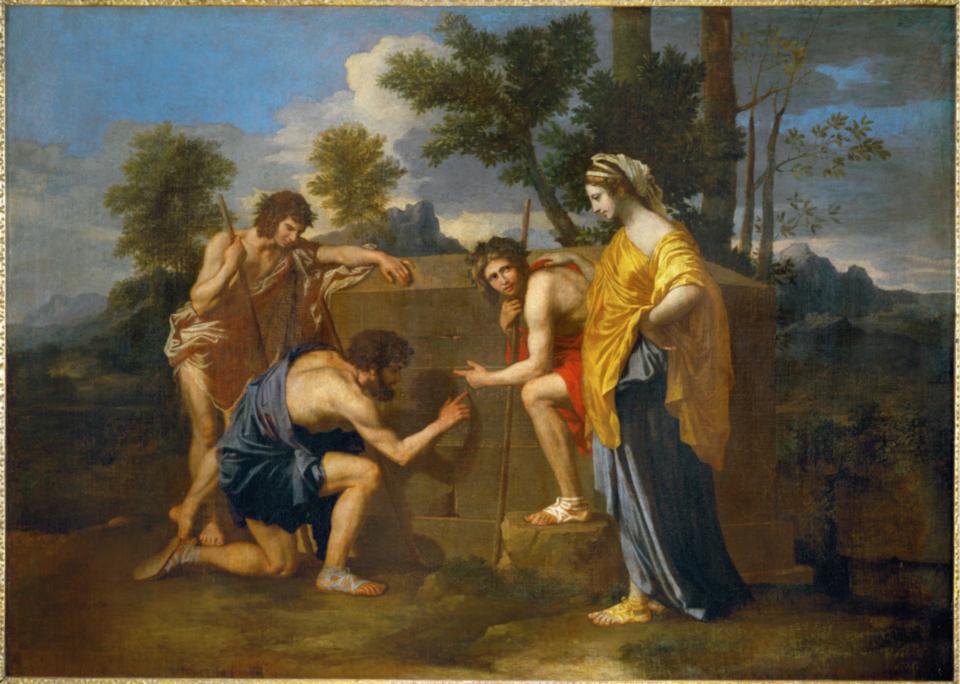I know your minde, and I will satisfie it: neyther will I doo it like a niggardly answerer, going no further then the boundes of the question, but I will discouer vnto you, aswell that wherein my knowledge is common with others, as that which by extraordinarie means is deliuered vnto me: knowing so much in you, though not long acquainted, that I shall find your eares faithfull treasurers.
These are the words of Kalandar, as he begins to describe a magical land called “Arcadia,” in Sir Philip Sidney’s pastoral romance, The Countess of Pembroke’s Arcadia.
The curious history and literary merit of this nearly euphuistic piece of writing (though Sidney might well object to such a summation) are easily and widely known and it would be tedious to launch into a discussion of the same.
However, there is an aspect of this work that has been overlooked, which may be expressed thus: In Sidney’s work, “Arcadia” is a trope for discourse, for conversation, for dialogue.
The post-classical Latin root of the term, “discourse” holds significance here: discursus, “to run hither and thither,” and even “to traverse.” Of course, a conversation without the courage to surmount the ramparts of diverse and opposing thought is little more than self-absorption.
And Kallandar is mindful of this need for courage, as he promises to speak about the wondrous land of Arcadia in an elaborately discursive manner, traversing the full extent of his subject, running up and down the length and breadth of it: “neyther will I doo it like a niggardly answerer, going no further then the boundes of the question.”
But discourse must also have occasion, a place, a centrality, a location, a space. What kind of conversation can possibly exist in a barren landscape – other than one of survival, of complaint? Is it any wonder that the best conversations are had not in the “rag and bone shop” of the office (to borrow from Yeats) – but in those spaces where we seek ease and relaxation (a pub, a café, a restaurant, or out amidst the bright expanse of nature), well-ensconced in the happy company of friends.
Is it not through conversation that we slowly discover the secret architecture of the soul, to paraphrase Paul Valéry?
All these things, is Arcadia, the land fully imagined – for how can we speak if we cannot dream? A conversation is not about necessity, the utterance of needs – rather, it is about love and loss, hope and expectation, desire and disappointment; all those things that make us human.
It is not our skills, our jobs which define us – it is our dreams alone that complete us.
Arcadia, therefore, as an idea, a place where creativity exists, where the heart and soul are nurtured, and where the delight of being fully human extends outwards to become joyful freedom: “for never does the heavenly fire [the soul, or the heart] consent to be imprisoned,” Friedrich Hölderlin reminds us.
Of course, it was Virgil in his Eclogues, who first discerned the intimate connection between an imagined landscape and mankind’s capacity to delight in its own humanity (the idylls of Theocritus are far too self-contained to be seen as proper blueprints for what Virgil accomplishes).
Thus, Virgil’s Arcadia is a place where elegant ideas hold sway, where refined emotions guide desire, and where esthetic expression is next to godliness. The famous words: “Man shall not live by bread alone,” cannot now be avoided.
There is a painting in the Louvre, entitled, “Les bergers d’Arcadie.” It is by Nicolas Poussin, and it shows a group (three shepherds and one shepherdess), all peering in wonderment, at a crumbling tomb they have chanced upon in their bucolic setting.
One of the shepherds is on his knee, tracing out, with his forefinger, a phrase nearly effaced by time. His shadow is cast upon the letters, making them difficult to read (perhaps so that we, like the shepherd, might make an effort to see the writing on the brief wall of the tomb).
This is a clever quotation by Poussin, for it is a subtle reference to Belshazzar’s feast in the book of Daniel, a subject painted by Poussin’s contemporary, Rembrandt. In fact, both these paintings were done in the 1630s.
But the phrase is, of course, also legible to the shepherds, and it has thrown the pastoral group into a reverie, as they seek to unravel its import: “et in Arcadia ego” – and I too in Arcadia.
Much scholarly ink has been spilt in explanation of these four simple Latin words. Do they refer to death, having been written on a tomb? A memento mori – that death persists even in idyllic settings? Or do they refer to the occupant of the tomb who is to be found in paradise.
And to give conspiracy theory its due (a malaise that has direly infected contemporary society, perhaps because said society has chosen to abandon wisdom), Dan Brown and his ilk would read these words as an encoded message left behind by an agent of the Priory of Sion (hapless Poussin being such agent) – the correct sense of the Latin be damned! But the less said about such inanities, the better.
These four simple Latin words tell a greater truth: “and I too in Arcadia” – how can eternity be known without death? And how can any conversation continue that is not also conversant with the ideas of those long gone?
Only in Arcadia, the imagined land, can the dead and the living speak together – and therefore Arcadia is humankind’s dialogue with eternity, wherein beauty is the visible manifestation of harmony, which may be named as reason.
Perhaps the enigmatic phrase suggests completion, as do we all: “et in Arcadia ego quoniam colloquo – “and I too am in Arcadia because I converse.”
A wonder-filled, truthfully spoken word is a faithful treasure to all those who have ears to hear.
